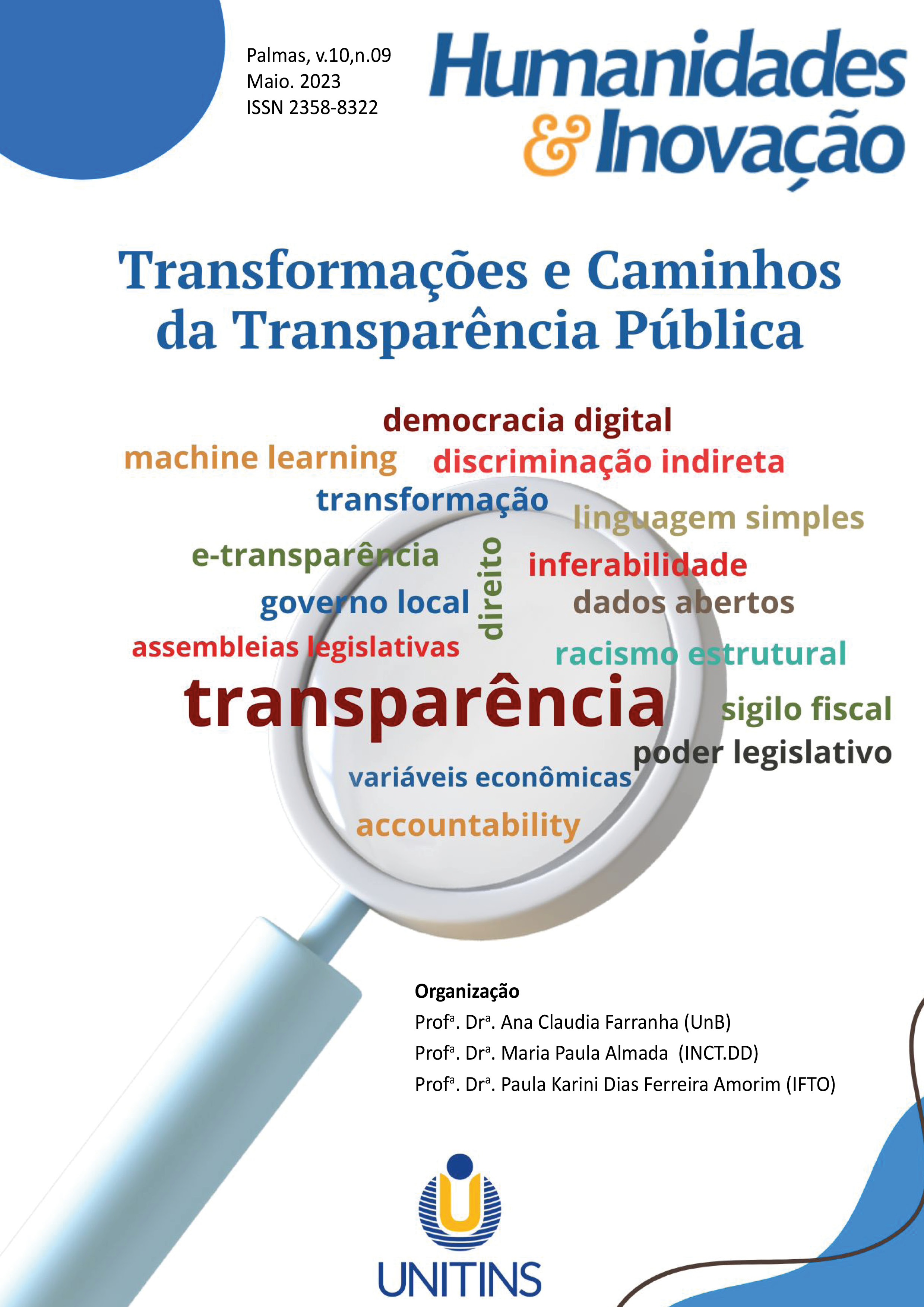RELATIVE CLAUSES IN BRAZILIAN SIGN LANGUAGE: NON-MANUAL MARKERS AS A COMBINING STRATEGY
Resumo
This paper discusses the construction of restrictive and non-restrictive clauses in Brazilian Sign Language (Libras), regarding the use of non-manual markers. Relative clauses play the role of an adjunct to a phrase. This research integrates the Inventory of Libras at Palmas – Tocantins, Brazil. Data analysis was carried out on ELAN with the creation of specific tiers to transcript non-manual markers in order to analyze restrictive and non-restrictive clauses in Libras. I intend to verify how non-manual markers can be used as a strategy to distinguish restrictive and non-relative clauses from their main clauses in Libras.
Referências
CARNEIRO, B. G. ; LEÃO, R. J. B.; LUDWIG, C. R.; et. al. Inventário da Língua Brasileira de Sinais da Região de Palmas – Tocantins: Metodologia de Coleta e Transcrição de Dados. Porto das Letras, ISSN 2448-0819, Vol. 05, Nº 01. Jan.-jun., 2019.
CARNEIRO, B. G.; CRUZ, A.; KHOURI, J. I. B. E.; Verbos de indicação na Libras: possíveis evidências de distanciamento. Porto das Letras, ISSN 2448-0819, Vol. 03, Nº 01. Jan.-jun., 2017.
CARNEIRO, B. G.; LUDWIG, C.R. Clause Articulation in Brazilian Sign Language – Libras. DESAFIOS - Revista Interdisciplinar da Universidade Federal do Tocantins, v. 7, n. 1, p. 64-77, 24 mar. 2020.
CARNEIRO; B. G.; LUDWIG, C. R. Articulação de Orações em Libras: Um Breve Panorama. Humanidades e Inovação. Vol. 7. N. 10., 2020.
CECCHETTO, C. Clause Types. In: PFAU, R.; STEINBACH, M.; WOLL, B. (orgs.), Sign language. An international handbook. p. 292–315. Berlin: De Gruyter Mouton, 2012.
CECCHETTO, C.; DONATI, C. GERACI, C. KELEPIR, M.; PFAU, R.; QUER, J.; STEINBACH, M. SignGram Blueprint: A Guide to Sign Language Grammar Writing. Berlin: De Gruyter, 2017.
HALLIDAY, M. A. K. Introduction to Functional Grammar. Londres: Routledge, 2004.
KUBUS, O. Relative Clause Constructions in Turkish Sign Language. Universidade de Hamburg (Tese de Doutorado), 2016.
LEHMANN, C. On the Typology of Relative Clauses. In: Linguistics, N. 24, p. 663-680, 1988.
LIDDELL, S. American Sign Language Syntax. The Hague: Mouton, 1980.
LIDDELL, S. K. Grammar Gesture and Meaning in American Sign Languages. Cambridge: Cambridge University Press, 2003.
LILLO-MARTIN, D.; QUADROS, R. M. de. The Position of Early WH-Elements in American Sign Language and Brazilian Sign Language. Galana, 2007.
QUADROS, R. M. de; NUNES, J. M. Duplication of Wh-elements in Brazilian Sign Language. In: 35 Annual Meeting of the North East Linguistic Society - 2004 NELS, 2006, Storrs/USA. NELS 35 - Proceedings of the thirty-fifth annual meeting of the North East Linguistic Society. Storrs/USA: Leah Bateman and Cherlon Ussery, 2006. v. 2. p. 463-478.
QUADROS, R. M.; SCHMITT, D.; LOHN, J. T.; LEITE, T. A. e colaboradores. Corpus de Libras. Disponível em: http://corpuslibras.ufsc.br/.
RODRIGUES, A.; SOUZA, J. C. Gramaticalização do sinal “motivo” na língua brasileira de sinais: uma análise baseada no uso. Revista do GEL, v. 16, n. 1, p. 53-82, 2019. Disponível em: https://revistadogel.gel.org.br/
SANDLER, W. Visual Prosody. In: PFAU, R.; STEINBACH, M.; WOLL, B. (orgs.), Sign language. An international handbook. p. 55–76. Berlin: De Gruyter Mouton, 2012.
TANG, G.; LAU, P. Coordination and Subordination. In: PFAU, R.; STEINBACH, M.; WOLL, B. (orgs.), Sign language. An international handbook. p. 340–364. Berlin: De Gruyter Mouton, 2012.
WILBUR, R. Information Structure. In: PFAU, R.; STEINBACH, M.; WOLL, B. (orgs.), Sign language. An international handbook. p. 462–489. Berlin: De Gruyter Mouton, 2012.
WILBUR, Ronnie. Internally-headed relative clauses in sign languages. Glossa: a journal of general linguistics, Vol. 2, N. 1, p. 1 – 34, 2017, DOI: https://doi.org/10.5334/gjgl.183
A submissão de originais para este periódico implica na transferência, pelos autores, dos direitos de publicação impressa e digital. Os direitos autorais para os artigos publicados são do autor, com direitos do periódico sobre a primeira publicação. Os autores somente poderão utilizar os mesmos resultados em outras publicações indicando claramente este periódico como o meio da publicação original. Em virtude de sermos um periódico de acesso aberto, permite-se o uso gratuito dos artigos em aplicações educacionais, científicas, não comerciais, desde que citada a fonte (por favor, veja a Licença Creative Commons no rodapé desta página).











